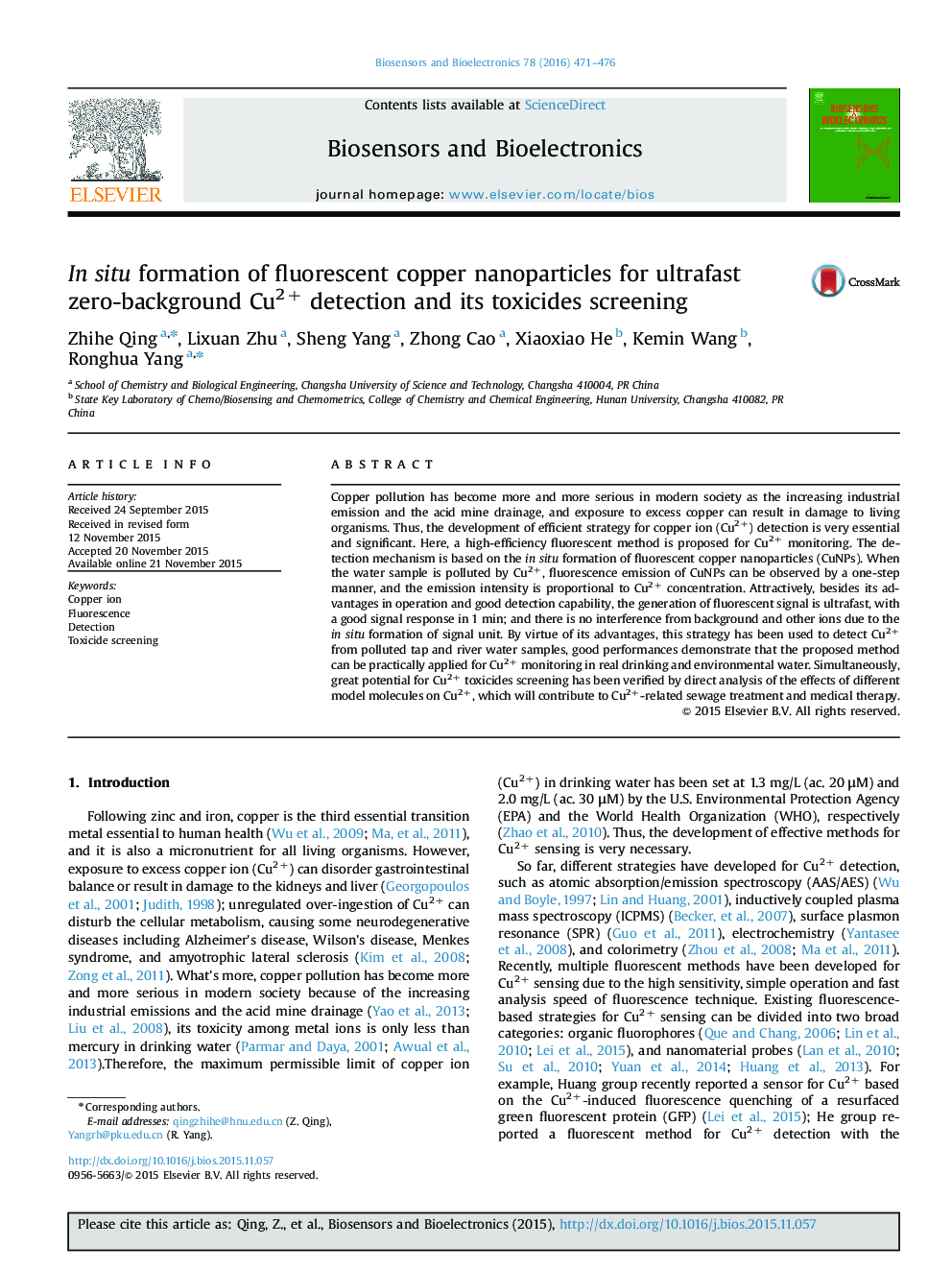| Article ID | Journal | Published Year | Pages | File Type |
|---|---|---|---|---|
| 7231095 | Biosensors and Bioelectronics | 2016 | 6 Pages |
Abstract
Copper pollution has become more and more serious in modern society as the increasing industrial emission and the acid mine drainage, and exposure to excess copper can result in damage to living organisms. Thus, the development of efficient strategy for copper ion (Cu2+) detection is very essential and significant. Here, a high-efficiency fluorescent method is proposed for Cu2+ monitoring. The detection mechanism is based on the in situ formation of fluorescent copper nanoparticles (CuNPs). When the water sample is polluted by Cu2+, fluorescence emission of CuNPs can be observed by a one-step manner, and the emission intensity is proportional to Cu2+ concentration. Attractively, besides its advantages in operation and good detection capability, the generation of fluorescent signal is ultrafast, with a good signal response in 1Â min; and there is no interference from background and other ions due to the in situ formation of signal unit. By virtue of its advantages, this strategy has been used to detect Cu2+ from polluted tap and river water samples, good performances demonstrate that the proposed method can be practically applied for Cu2+ monitoring in real drinking and environmental water. Simultaneously, great potential for Cu2+ toxicides screening has been verified by direct analysis of the effects of different model molecules on Cu2+, which will contribute to Cu2+-related sewage treatment and medical therapy.
Keywords
Related Topics
Physical Sciences and Engineering
Chemistry
Analytical Chemistry
Authors
Zhihe Qing, Lixuan Zhu, Sheng Yang, Zhong Cao, Xiaoxiao He, Kemin Wang, Ronghua Yang,
